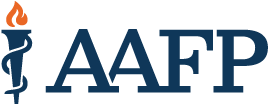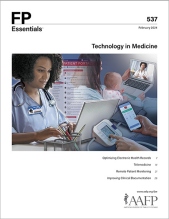
This clinical content conforms to AAFP criteria for CME.
The association between electronic health record (EHR) documentation and physician burnout is well-known. A combination of insufficient time to complete tasks, clinical documentation burden, and electronic inbox overload comprises the definition of documentation-related burnout. Burnout mitigation strategies related to clinical documentation include use of targeted EHR training for documentation, use of medical scribes, and institutional documentation redesign. Mitigation strategies related to electronic inbox overload include assigning designated administrative time for inbox management, tailoring of message content to decrease length, and a team-based approach to clinical workflows. Best practices for improving the efficiency of clinical documentation in the EHR include use of automation tools (eg, macros, templates), physician note optimization, and use of team-based documentation. Clinical documentation aids such as medical scribes, speech recognition software, and artificial intelligence (AI)–based software are popular and often considered a necessary resource in health care. For most practices, decisions regarding which aid to use will likely be determined by cost. Speech recognition software is the lowest cost option. AI–based software and medical scribes are more costly.
Case 4. You have yet to complete and sign all of your notes for patient visits in the last week despite working additional hours each day. You have been spending time in the electronic health record (EHR) over the weekend, accessing it remotely to finish documentation for patient visits in the previous week. You feel that you have lost control of your practice and that your work is slowly losing meaning.
Subscribe
From $350- Immediate, unlimited access to FP Essentials content
- 60 CME credits/year
- AAFP app access
- Print delivery available
Edition Access
$44- Immediate, unlimited access to this edition's content
- 5 CME credits
- AAFP app access
- Print delivery available
